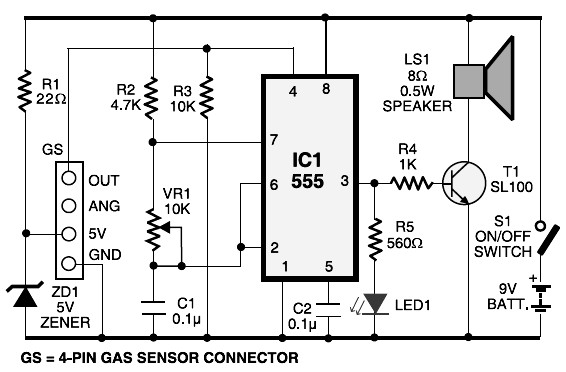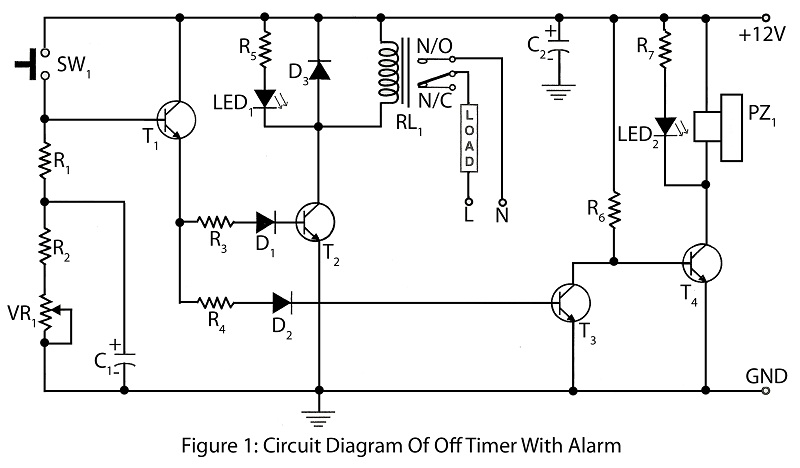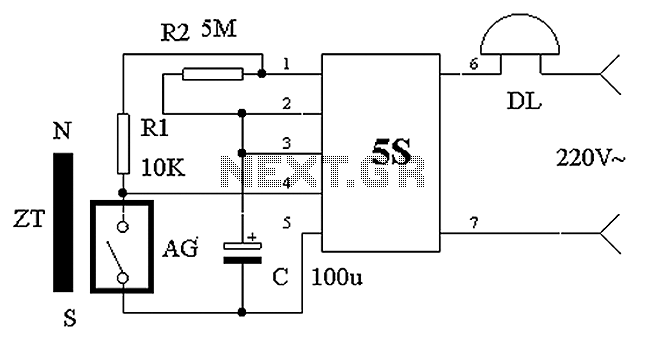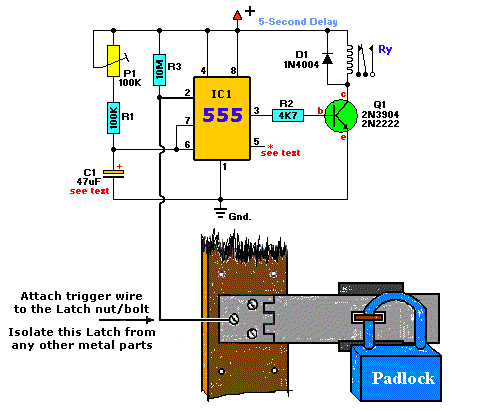
Personal Alarm
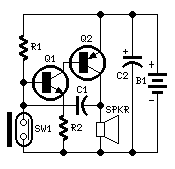
This circuit, enclosed in a small plastic box, can be placed into a bag or handbag. A small magnet is placed close to the reed switch and connected to the hand or the clothes of the person carrying the bag by means of a tiny cord. If the bag is snatched abruptly, the magnet loses its contact with the reed switch, SW1 opens, the circuit starts oscillating and the loudspeaker emits a loud alarm sound. The device can be reverse connected, i.e., the box can be placed in a pocket and the cord connected to the bag.
The described circuit functions as a personal security alarm system designed to deter theft of bags or handbags. The core components of this circuit include a reed switch (SW1), a small magnet, an oscillator circuit, and a loudspeaker.
The reed switch operates as a magnetic field sensor. When the magnet is in proximity to the reed switch, it remains closed, thus allowing current to flow through the circuit. This state indicates that the bag is secured and under the owner’s control. The small magnet is tethered to the user via a thin cord, which can be easily attached to clothing or the hand, ensuring that the magnet remains close to the reed switch during normal usage.
In the event of a sudden theft attempt, the magnet will detach from the reed switch due to the abrupt movement of the bag. This detachment causes the reed switch to open, which in turn triggers the oscillator circuit. The oscillator generates a high-frequency signal that energizes the loudspeaker, producing a loud alarm sound. This alarm serves to alert the owner and nearby individuals of the theft in progress, potentially deterring the thief.
The design is versatile, allowing for the box housing the circuit to be placed in various locations, such as a pocket or inside a bag, while the cord can be adjusted accordingly to maintain the connection between the magnet and the switch. This adaptability enhances the usability of the device in different scenarios, making it a practical solution for personal security.
Overall, the circuit is designed to be compact and efficient, providing a reliable means of theft deterrence through simple mechanical and electronic interactions.This circuit, enclosed in a small plastic box, can be placed into a bag or handbag. A small magnet is placed close to the reed switch and connected to the hand or the clothes of the person carrying the bag by means of a tiny cord. If the bag is snatched abruptly, the magnet looses its contact with the reed switch, SW1 opens, the circuit starts oscillating and the loudspeaker emits a loud alarm sound.
The device can be reverse connected, i.e. the box can be placed in a pocket and the cord connected to the bag. 🔗 External reference
The described circuit functions as a personal security alarm system designed to deter theft of bags or handbags. The core components of this circuit include a reed switch (SW1), a small magnet, an oscillator circuit, and a loudspeaker.
The reed switch operates as a magnetic field sensor. When the magnet is in proximity to the reed switch, it remains closed, thus allowing current to flow through the circuit. This state indicates that the bag is secured and under the owner’s control. The small magnet is tethered to the user via a thin cord, which can be easily attached to clothing or the hand, ensuring that the magnet remains close to the reed switch during normal usage.
In the event of a sudden theft attempt, the magnet will detach from the reed switch due to the abrupt movement of the bag. This detachment causes the reed switch to open, which in turn triggers the oscillator circuit. The oscillator generates a high-frequency signal that energizes the loudspeaker, producing a loud alarm sound. This alarm serves to alert the owner and nearby individuals of the theft in progress, potentially deterring the thief.
The design is versatile, allowing for the box housing the circuit to be placed in various locations, such as a pocket or inside a bag, while the cord can be adjusted accordingly to maintain the connection between the magnet and the switch. This adaptability enhances the usability of the device in different scenarios, making it a practical solution for personal security.
Overall, the circuit is designed to be compact and efficient, providing a reliable means of theft deterrence through simple mechanical and electronic interactions.This circuit, enclosed in a small plastic box, can be placed into a bag or handbag. A small magnet is placed close to the reed switch and connected to the hand or the clothes of the person carrying the bag by means of a tiny cord. If the bag is snatched abruptly, the magnet looses its contact with the reed switch, SW1 opens, the circuit starts oscillating and the loudspeaker emits a loud alarm sound.
The device can be reverse connected, i.e. the box can be placed in a pocket and the cord connected to the bag. 🔗 External reference
